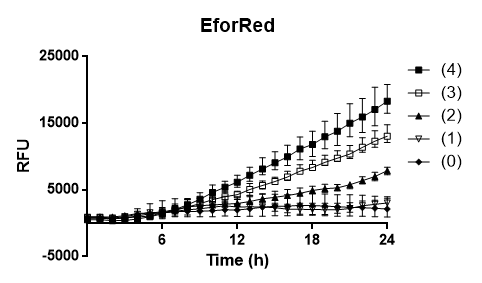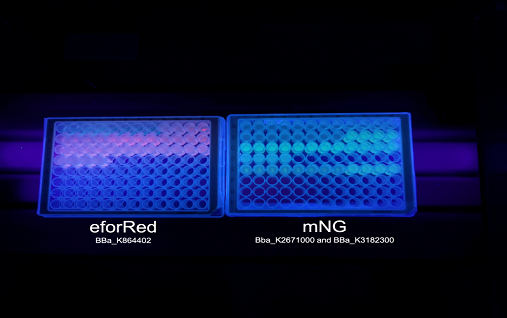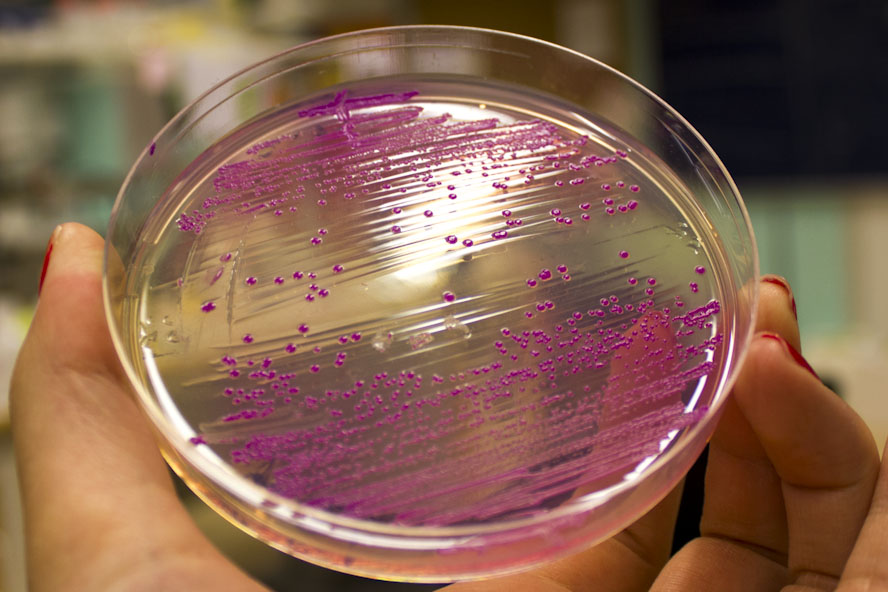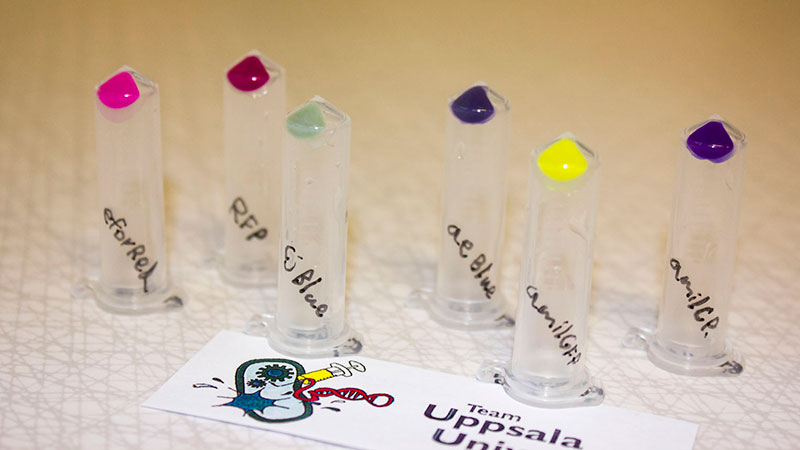Part:BBa_K864402
J23110-B0034-eforRed
eforRed eforRed is previously described as BBa_K592012. We submitted a functionally active variant with J23110 and B0034.
Contribution
Group: Linkoping_Sweden iGEM 2019
Author: Andreas Holmqvist and Leo Juhlin
Summary:
In this contribution we characterized the visual absorbance and the fluorescence of this construct. We also tested the oxygen dependency of the chromophore protein expression in E.coli BL21(DE3) cells and then measured the absorbance of the cells with a plate reader.
Documentation:
- the BBa_B0034 ribosome binding site
- the BBa_J23110 Constitutive promotor
Figure 1. To the left This biobrick after 48 hours in 37 degrees Celsius (both pictures). To the left is cultured E. coli BL21 (DE3) Gold cells with this biobrick in white light. The culture tubes had a constant supply of oxygen (cotton plugs) which is important for the chromophore/fluorophore of eforRed to develop. In the bottom right a culture of BL21 (DE3) Gold which has been incubated for 48 hours in 37 degrees Celsius has been centrifuged at 12 000 g for 10 min. The result is a pellet of eforRed expressing bacteria with a burgundy color. The same pellet in the top right was put on a UV table (302 nm) which resulted in a pink glowing pellet.
Figure 2. Colonies in the same host as previously in figure 1 is illuminated in 302 nm UV-light, showing eforReds ability to also emit strong fluorescence.


Figure 3. To the left is a spectrophotometric experiment where varying levels of oxygen supply were tested. The holes were made in the plastic cover of a 96-well plate and run for 16 hours in 37 degrees Celsius, this results shows the oxygen dependency of eforReds chromophore/fluorophore development. To the right is this biobrick in a 96-well plate, the culture has been in the well O.N in 37 degrees Celsius with varying levels of oxygen supply. The plate to the right is different expression systems used to test a strong green/yellow fluorescent protein. These results show eforReds ability to fluorescence, making it a fluorescent as well as a chromoprotein. Both plates were illuminated in 302 nm UV-light.

Sequence and Features
| None |



